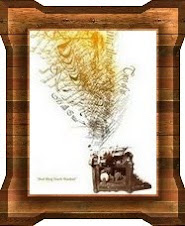Artist M.C. Escher created the drawing on the left. He titled this woodcut Regular Division of the Plane III. A close study reveals that Escher simultaneously shows (1) white horses and riders moving from left to right, (2) black horses and riders moving from right to left, (3) white background at the top, (4) black background at the bottom, and (5) horses and riders interlocking like jigsaw puzzle pieces. His drawings leave me amazed at his creative ability.
The Bible contains passages that amaze me in the same way. They reveal more than one truth at the same time. Malachi 4:5-6 is one of those passages. “Behold, I will send you Elijah the prophet before the great and awesome day of the Lord comes. And he will turn the hearts of fathers to their children and the hearts of children to their fathers…" (ESV) Through the years, the Jewish rabbis debated the meaning of this prophecy without reaching consensus.
The first fulfillment shows up in Luke 1:13-17: “The angel said to him, "Do not be afraid, Zechariah, for your prayer has been heard, and your wife Elizabeth will bear you a son, and you shall call his name John. And you will have joy and gladness, and many will rejoice at his birth, for he will be great before the Lord. And he must not drink wine or strong drink, and he will be filled with the Holy Spirit, even from his mother's womb. And he will turn many of the children of Israel to the Lord their God, and he will go before him in the spirit and power of Elijah, to turn the hearts of the fathers to the children…" (ESV)
The angel announced the birth of John the Baptist as fulfillment of Malachi’s prophecy. However, that fulfillment did not look the way the Jewish rabbis expected it to look. When they asked John the Baptist if he were Elijah, he told them that he was not. (John 1:19-21, ESV)
Jesus clarified the way John the Baptist fulfilled the prophecy and pointed to an additional, more complete fulfillment in Matthew 17:10-13. “And the disciples asked him, "Then why do the scribes say that first Elijah must come?" He answered, "Elijah does come, and he will restore all things. But I tell you that Elijah has already come, and they did not recognize him, but did to him whatever they pleased. So also the Son of Man will certainly suffer at their hands." Then the disciples understood that he was speaking to them of John the Baptist.” (ESV)
John the Baptist fulfilled Malachi’s prophecy in a way that the most highly trained religious scholars could not recognize. It appears that even John the Baptist did not see his own part in fulfilling it. It took Jesus to reveal that the prophecy had more than one fulfillment and that the first one included John the Baptist.
What did you see when you first looked at the Escher drawing: white horses on a black background or black horses on a white background? Did it take you some time to see for yourself that it was both?
People who can only see black horses sometimes argue with those who see only white horses about what they see. The Jewish scholars argued over the fulfillment of Malachi's prophecy. We sometimes fall into that same mind set when we read a passage in the Bible. Before we find ourselves convinced that a passage in the Bible can have only one interpretation, we might think about this drawing.
If a man is intelligent and creative enough to produce a picture that shows so many things at the same time, then we can well believe that God can do the same thing. By exploring just two verses in Malachi we see that God may surprise us in the way He chooses to fulfill His words, similar to the way Escher surprises us by his art. After all, the Bible is God’s Living Word.
Friday, April 23, 2010
Subscribe to:
Comments (Atom)

.jpg)



.jpg)
